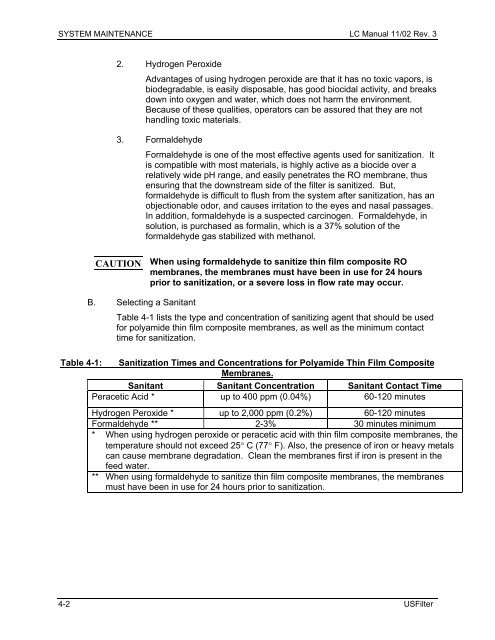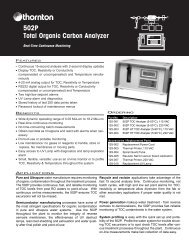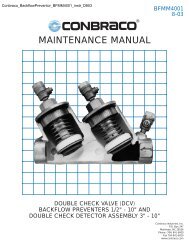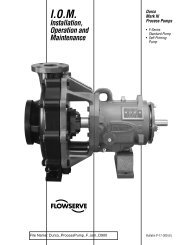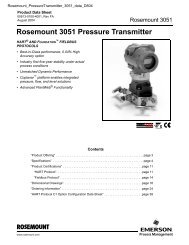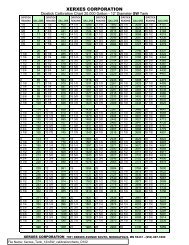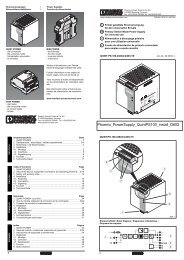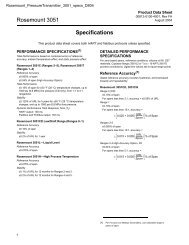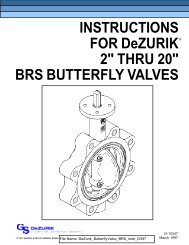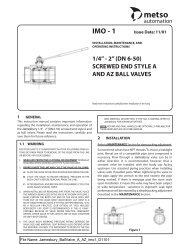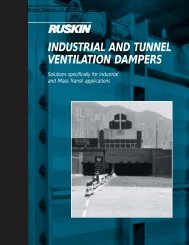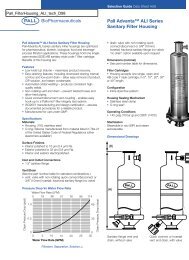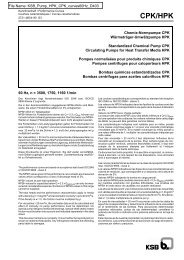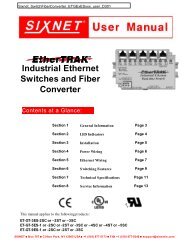Operation and Maintenance Manual for
Operation and Maintenance Manual for
Operation and Maintenance Manual for
You also want an ePaper? Increase the reach of your titles
YUMPU automatically turns print PDFs into web optimized ePapers that Google loves.
SYSTEM MAINTENANCE LC <strong>Manual</strong> 11/02 Rev. 3<br />
2. Hydrogen Peroxide<br />
Advantages of using hydrogen peroxide are that it has no toxic vapors, is<br />
biodegradable, is easily disposable, has good biocidal activity, <strong>and</strong> breaks<br />
down into oxygen <strong>and</strong> water, which does not harm the environment.<br />
Because of these qualities, operators can be assured that they are not<br />
h<strong>and</strong>ling toxic materials.<br />
3. Formaldehyde<br />
Formaldehyde is one of the most effective agents used <strong>for</strong> sanitization. It<br />
is compatible with most materials, is highly active as a biocide over a<br />
relatively wide pH range, <strong>and</strong> easily penetrates the RO membrane, thus<br />
ensuring that the downstream side of the filter is sanitized. But,<br />
<strong>for</strong>maldehyde is difficult to flush from the system after sanitization, has an<br />
objectionable odor, <strong>and</strong> causes irritation to the eyes <strong>and</strong> nasal passages.<br />
In addition, <strong>for</strong>maldehyde is a suspected carcinogen. Formaldehyde, in<br />
solution, is purchased as <strong>for</strong>malin, which is a 37% solution of the<br />
<strong>for</strong>maldehyde gas stabilized with methanol.<br />
CAUTION When using <strong>for</strong>maldehyde to sanitize thin film composite RO<br />
membranes, the membranes must have been in use <strong>for</strong> 24 hours<br />
prior to sanitization, or a severe loss in flow rate may occur.<br />
B. Selecting a Sanitant<br />
Table 4-1 lists the type <strong>and</strong> concentration of sanitizing agent that should be used<br />
<strong>for</strong> polyamide thin film composite membranes, as well as the minimum contact<br />
time <strong>for</strong> sanitization.<br />
Table 4-1: Sanitization Times <strong>and</strong> Concentrations <strong>for</strong> Polyamide Thin Film Composite<br />
Membranes.<br />
Sanitant Sanitant Concentration Sanitant Contact Time<br />
Peracetic Acid * up to 400 ppm (0.04%) 60-120 minutes<br />
Hydrogen Peroxide * up to 2,000 ppm (0.2%) 60-120 minutes<br />
Formaldehyde ** 2-3% 30 minutes minimum<br />
* When using hydrogen peroxide or peracetic acid with thin film composite membranes, the<br />
temperature should not exceed 25° C (77° F). Also, the presence of iron or heavy metals<br />
can cause membrane degradation. Clean the membranes first if iron is present in the<br />
feed water.<br />
** When using <strong>for</strong>maldehyde to sanitize thin film composite membranes, the membranes<br />
must have been in use <strong>for</strong> 24 hours prior to sanitization.<br />
4-2 USFilter


